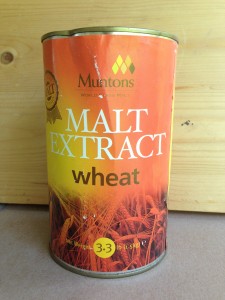 There are basically two steps to brewing a very strong beer by feeding your fermentation. The first step is to formulate a recipe and a plan. The second step is to brew the initial beer and then feed the fermentation. I’ll cover the first step today and the second tomorrow.
There are basically two steps to brewing a very strong beer by feeding your fermentation. The first step is to formulate a recipe and a plan. The second step is to brew the initial beer and then feed the fermentation. I’ll cover the first step today and the second tomorrow.
Twelve percent alcohol by volume (ABV) is the alcohol tolerance listed for many yeast strains that are commonly use to brew strong beers. For recipes under 12% ABV, you probably do not want to bother with feeding — just brew the normal way, paying close attention to pitching rate and aeration. If your beer is over 12% ABV, or the predicted ABV is higher than the alcohol tolerance listed for your intended yeast strain, feeding the fermentation should let you squeeze a little bit more alcohol from your yeast.
Formulating the Recipe
As an example, let’s say we want to brew a beer with 14% ABV using a yeast whose alcohol tolerance is listed as 12% ABV. Our first step would be formulate to the beer recipe as if it were to be brewed in the normal way. So let’s say we draw up a 5.0-gallon (19-L) barleywine recipe with an OG of 1.144 and an FG of 1.036. This will give us 14% ABV. (This is 75% apparent attenuation.) However, we’ll now adjust the recipe and procedures so we begin to ferment the beer as a 12% ABV ale, and then feed it to 14% ABV.
Our next step would be to reformulate the recipe as a 12% ABV ale and determine how much sugar we would need to feed the fermentation. If you use recipe formulation software, simply start subtracting base malt (in the case of an all-grain recipe) or malt extract from the recipe until the projected OG yields a 12% ABV beer, given the expected attenuation of your yeast. (If the fermentability of your ingredients varies, as when adding sugar — which is 100% fermentable — you must account for this as well.)
Realize that the sugar solution required for feeding is going to take up some volume. As such, you’ll want the volume of your initial batch to be lower than your final batch size. In this example, we’ll brew 4.5 gallons (17 L) of 12% ABV beer for starters, then feed to fermentation to produce 5.0 gallons (19 L) of beer with an ABV of 14%. Note that the level of hops and specialty malts in the 4.5 gallon (17-L) initial batch should be set as if the initial recipe were for 5.0 gallons (19 L). As such, the initial batch will start out darker and hoppier than your target. Those factors will be diluted down to your target when the fermentation is fed. (In other words, feeding increases wort volume and — once the sugars are fermented — alcohol content, but will decrease bitterness and color.)
Once you’ve formulated the lower-gravity recipe (at a slightly smaller volume), subtract the amount of base malt or malt extract in the second recipe from the amount in the first. The amount of malt or malt extract you subtracted gives you the amount of sugar required to feed the batch. Convert the amount of base malt or malt extract to the equivalent amount of malt extract or sugar.

You can use malt extract (dried or liquid), sugar, honey, or any other source of fermentable sugars to feed your fermentation.
In this example, I’ve chosen to add dried malt extract (around 3.5 lb./1.6 kg) to feed to fermentation. This powder will be dissolved in enough water to yield 2 qts. (~ 2 L) of solution. This will require some stirring and patience to dissolve, but is well within the solubility limit for simple sugars in water. Heat the solution to around 170 °F (77 °C) while dissolving the malt extract to speed dissolving and sanitize the solution. The specific gravity of this solution will be high, over SG 1.300, but nowhere near as high as that of liquid malt extract (or honey or other sugar syrups.) At this specific gravity, the solution is concentrated enough to feed the fermentation, and boost the “virtual OG,” but liquid enough that it will dissolve quickly into the fermenting beer with only moderate stirring.
What Comes Next?
Tomorrow, I’ll explain how this works in practice, with special attention paid to when and how often to feed to fermentation.
—
Related Articles
Wort Production for Very Big Beers

Speak Your Mind